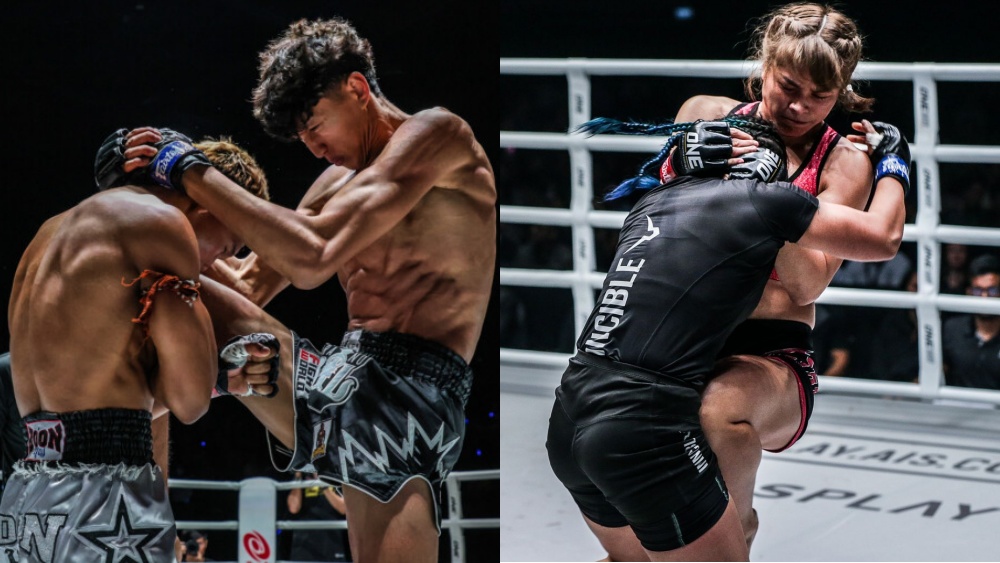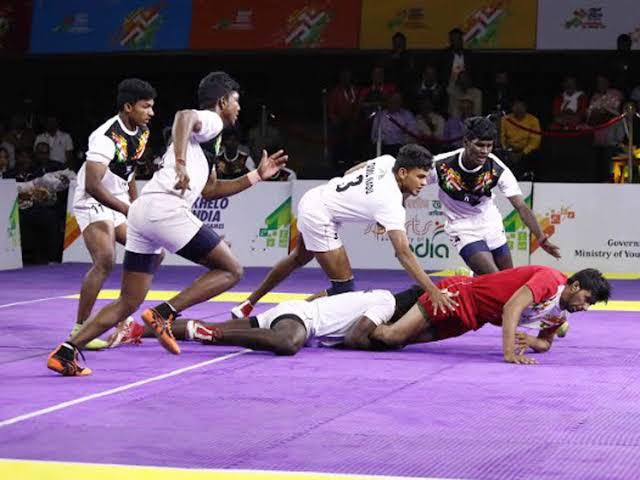
Muay Thai is often called the art of eight limbs, combining punches, kicks, elbows, and knees into a complete striking system. Among these weapons, the knee is one of the most powerful and effective tools, especially when used from the clinch. One variation that demonstrates both timing and technique is the double knee. Instead of landing a single strike and resetting, fighters chain two knees together in quick succession to overwhelm defenses and keep control. Mastering the double knee is not just about power but also about rhythm, balance, and positioning.
Why Double Knees Are Effective
The effectiveness of double knees comes from their ability to break an opponent’s rhythm. A single knee can often be defended or absorbed, but following immediately with a second knee forces the opponent to react again before they can fully recover. This makes the attack harder to block and increases the likelihood of landing cleanly.
Double knees also add variety to a fighter’s offense. Instead of being predictable with single strikes, chaining two together creates pressure and prevents the opponent from anticipating the next move. Over time, this wears down their stamina and confidence.
Situations To Use Double Knees
Double knees are most commonly used in the clinch, but the setup and timing determine their success:
- When Controlling Posture: Once you secure a strong clinch grip with your hands behind the opponent’s head or controlling their arms, a quick double knee sequence can exploit their exposed body.
- After An Initial Knee Lands: If the first knee connects cleanly, your opponent naturally drops their guard or shifts balance. Following up immediately with another knee takes advantage of that moment.
When the opponent defends late, some fighters react slowly to the first strike. A second knee in rapid succession capitalizes on their hesitation. These moments are when the double knee becomes most punishing.
Techniques For Executing Double Knees
To throw effective double knees, technique matters more than brute force:
- Establish Control In The Clinch: Keep your arms tight and head close. Good posture prevents your opponent from escaping or countering.
- Engage The Core And Hips: Knees should drive upward and forward with the hips, not just the leg. This ensures power while keeping balance.
- Switch Rhythm Between Sides: Start with the right knee, then shift quickly to the left, or vice versa. Alternating creates a smoother flow and makes it harder to defend.
- Maintain Balance: After the first knee, replant your foot firmly before launching the second. Rushing without balance can cause you to lose control, resulting in you getting sweeped easily.
- Use Short Adjustments: A small pull with the arms or a shift in angle can open space for the second strike.
With practice, the movement becomes fluid, almost like a chain rather than two separate strikes.
Common Double Knee Combinations
Double knees can also be combined with other weapons to increase their impact:
- Double Knee To Push: Land two knees, then push the opponent back to reset and prepare for another attack.
- Double Knee To Elbow: After chaining two knees, use a short elbow to catch the opponent as they drop their guard.
- Double Knee To Sweep: Use knees to off-balance your opponent, then follow with a trip to the ground.
- Double Knee To Body Kick: Exit the clinch after two knees and fire a kick to keep the pressure going.
These combinations turn the double knee into a versatile tool that links seamlessly with other Muay Thai techniques.
Drills To Improve Double Knees
Repetition is essential for developing speed and power in the double knees:
- Heavy Bag Knees: Drive knees into the bag in alternating pairs, focusing on balance and hip engagement.
- Partner Pad Drills: Have a training partner hold pads close to simulate clinch range, then practice throwing double knees in quick bursts.
- Clinch Resistance Drills: Work with a partner who resists while you attempt double knees. This develops strength and control in realistic conditions.
- Shadowboxing With Knees: Visualize clinch control and flow between knees without equipment. This sharpens rhythm and timing.
By drilling consistently, fighters build the muscle memory to throw double knees naturally during sparring or competition.
Mistakes To Avoid
Beginners often make common errors when attempting double knee. Some of which are commonly encountered by beginners include:
- Relying Only On Purely Your Legs: Without engaging the hips and core, the strikes lose power.
- Rushing The Second Knee: Throwing too quickly without balance can make the attack sloppy and leave openings.
- Telegraphing The Movement: Pulling the arms too obviously or winding up before the strike gives the opponent time to defend.
- Neglecting Defense: While attacking, fighters must still keep their guard active to avoid counters.
Avoiding these mistakes ensures that the double knee remains a strong and reliable weapon.
FAQs About Utilizing Double Knees In Muay Thai
Q: What Are Double Knees In Muay Thai?
A: Double knees are basically two consecutive knee strikes delivered in quick succession, usually from the clinch, to break rhythm or overwhelm an opponent’s defense.
Q: Are Double Knees Only Useful In The Clinch?
A: They are most effective in the clinch, but they can also be thrown from mid-range when stepping in, especially after catching a kick.
Q: How Can I Increase Power In My Double Knees?
A: Focus on driving with the hips and core rather than just lifting the leg. Conditioning exercises for the core and legs also add strength.
Conclusion
Double knees in Muay Thai are more than just back-to-back knee strikes. They are a demonstration of rhythm, control, and pressure in the clinch. When executed with balance and timing, they break through defenses, create opportunities for follow-up attacks, and wear down opponents both physically and mentally.
For practitioners, learning to utilize double knees adds another layer to their Muay Thai arsenal. They represent the spirit of persistence that defines the art, reminding fighters that sometimes, it is not one strike that makes the difference but the relentless chain that follows.
You may also like:
The Ultimate Guide To The Muay Khao Style For Muay Thai
In combat sports, the way a fighter stands can change everything about how a match unfolds. Stance determines balance, power, and angles of attack. Among the many stances, the southpaw stance is often described as…
In Muay Thai, different fighters develop distinct styles based on their strengths and strategies. Muay Khao refers to the knee-fighting style, one of the most dominant approaches in the sport. A Muay Khao fighter uses…
Starting Muay Thai is exciting, but walking into your first class can feel intimidating if you don’t know what to bring. Gloves, wraps, shorts, shin guards… do you really need them all on day one?…
Muay Thai is celebrated worldwide as the art of eight limbs, but within its long history are traditional regional styles that shaped the sport as we know it today. Among these is Muay Thasao, a…
Muay Thai is often called the art of eight limbs, using fists, elbows, knees, and kicks in fluid combinations. While power and technique get a lot of attention, rhythm is what ties everything together. Fighters…
In martial arts, improvement does not come only from sparring or drilling techniques. Another powerful tool for growth is watching fight replays. Whether its a professional bout streamed worldwide or a recorded sparring session in…
Few things in boxing are as intriguing as an orthodox fighter squaring off against a southpaw. The clash of stances often produces unusual rhythms, unexpected openings, and moments of brilliance. Because most fighters grow up…
Opening the closed guard is one of the most fundamental and often frustrating skills for beginners in Brazilian Jiu-Jitsu. If you’re stuck inside someone’s guard, your movements and offense strategies are completely limited. This article…
Children’s martial arts programs are becoming increasingly popular, with many parents seeking activities that do more than just keep their kids active. Martial arts training teaches important values like discipline, confidence, and respect, but one…
Singapore is known worldwide for its fast-paced life. Long work hours, competitive education, and the constant drive for success have given rise to what many call “hustle culture.” While this culture often pushes people to…
Mixed Martial Arts, or MMA, is often seen as the ultimate test of a fighter’s skill. It combines striking, grappling, and strategy into one dynamic sport. But behind every highlight reel knockout or submission win…
Brazilian Jiu-Jitsu, often called BJJ, is filled with techniques that allow a smaller or less powerful practitioner to reverse positions and gain control. Among the most iconic is the flower sweep. For students of all…

































